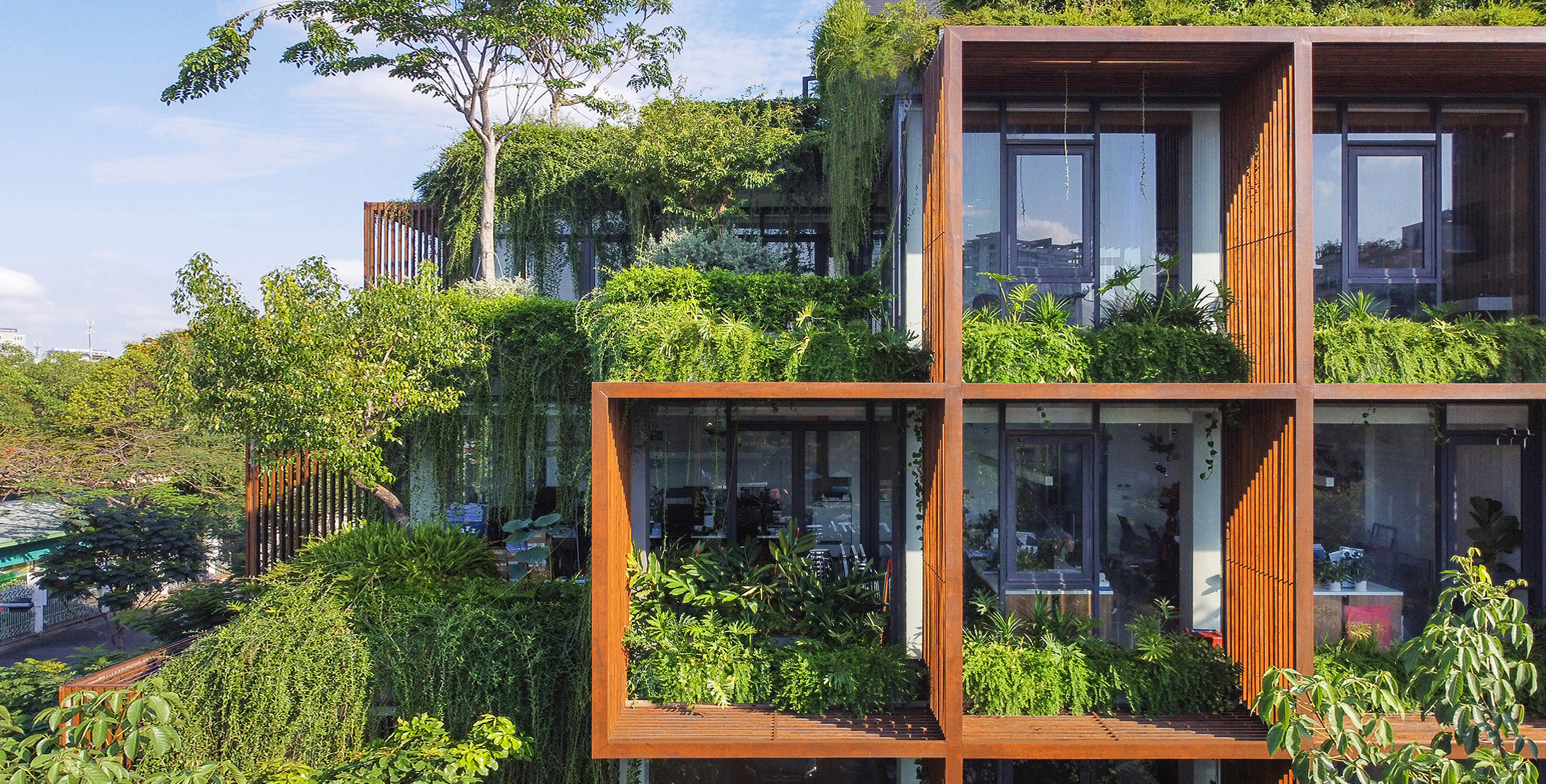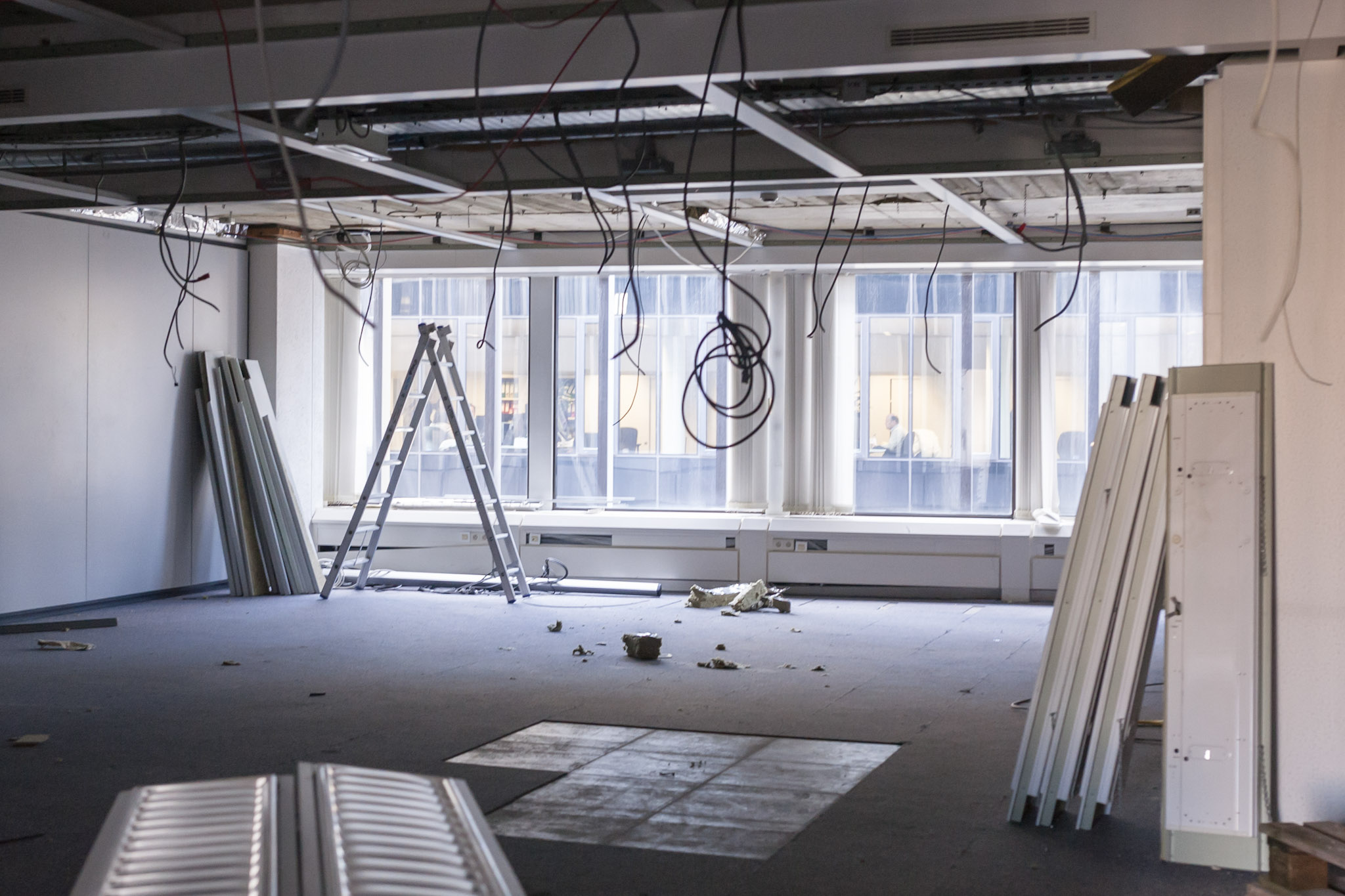The design and construction industry accounts for almost 40% of carbon emissions worldwide. With our climate evolving at a rapid pace and serious environmental catastrophes occurring on an increasingly regular basis, the need for change has never been more urgent. Former A+Award Winner Michel Rojkind, Founder of Mexican architecture firm Rojkind Arquitectos, put it best: “We want to create a dialogue about where architecture is heading. We constantly ask ourselves ‘Is what we’re doing in this lifetime part of the solution or part of the problem?’”
Now open for entries, the 12th Annual A+Awards highlights the program’s renewed commitment to sustainable design. Recognizing the pivotal role that architects play in building a more resilient world, Architizer has collaborated with leading sustainability experts to recognize the diverse efforts of practitioners working at the forefront of green design.
Enter the A+Sustainability Awards, a special suite of A+Award categories dedicated to projects that act as positive precedent for green building practices in specific regions and the wider world. In this article, you can learn more about the importance of these awards, the rationale behind the judging criteria, and the insight of A+Award-winning architects on the critical need for design innovation in this key area.
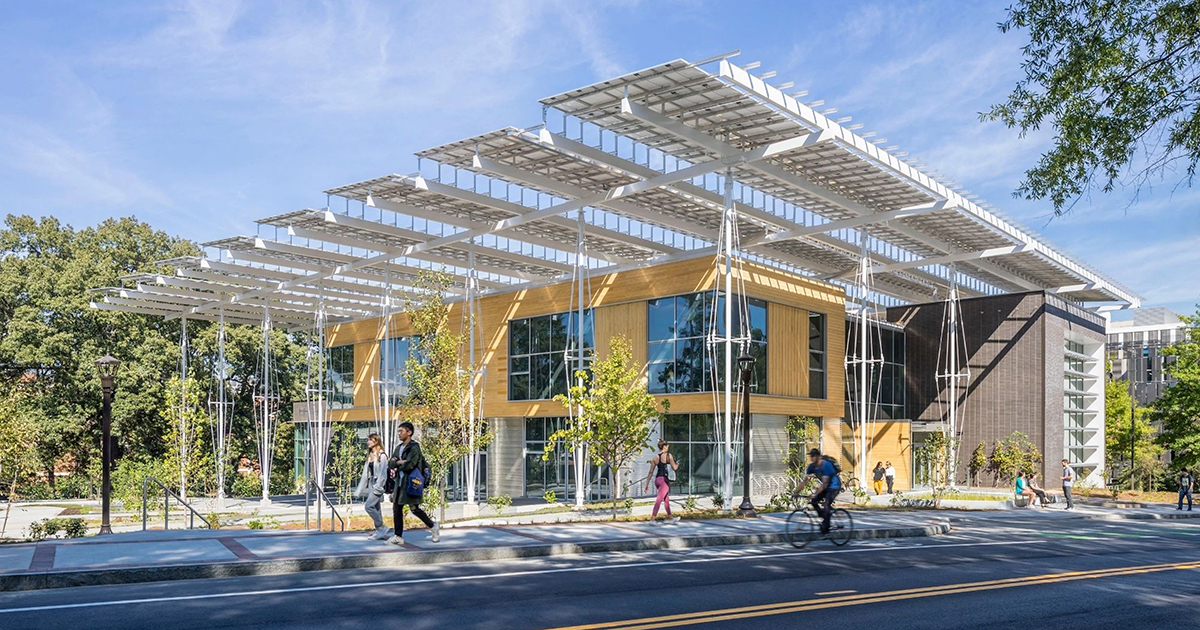
The Kendeda Building for Innovative Sustainable Design by The Miller Hull Partnership won an A+Award Finalist accolade last season for Architecture +Sustainability, while the firm scooped the Best Sustainable Firm Jury Prize. The building features a “Regenerative Porch” that performs the traditional tasks of creating a cool microclimate around the building and blurring interior and exterior conditions. A photovoltaic canopy generates more than 100% of the building’s energy demand and captures enough rainwater to meet 100% of the water used in the building.
How do we define sustainable design?
While most architects agree that we need to work towards more sustainable construction practices, it is a challenge to provide a universal measure of sustainability for architecture globally. There are many ways in which a building can be considered “green”, and a wide array of definitions for “sustainable design”, depending on a plethora of factors including geography, regulations of national and local governments, localized climate and environmental features, socio-economics, community culture and more.
The A+Awards seeks to celebrate architecture and design firms who are working towards a more sustainable built environment, wherever they may be based and whatever challenges or opportunities are inherent within each project. The judging criteria takes into consideration local characteristics, while rewarding projects that push the envelope and form a positive precedent for greener building practices in its specific region and the wider world.
What Sustainability Categories have been introduced?
With the exception of the Unbuilt categories, entries must be built within the past three years. The following 13 Sustainability Categories are available to submit for:
- Sustainable Commercial Building
- Sustainable Cultural Building
- Sustainable Institutional Building
- Sustainable Hospitality Building
- Sustainable Private House
- Sustainable Multi-Unit Residential Building
- Sustainable Adaptive Reuse or Renovation Project – NEW!
- Sustainable Sports & Recreation Building
- Sustainable Transportation Project
- Sustainable Landscape/Planning Project
- Sustainable Interior Project
- Sustainable Unbuilt Residential Project
- Sustainable Unbuilt Non-Residential Project
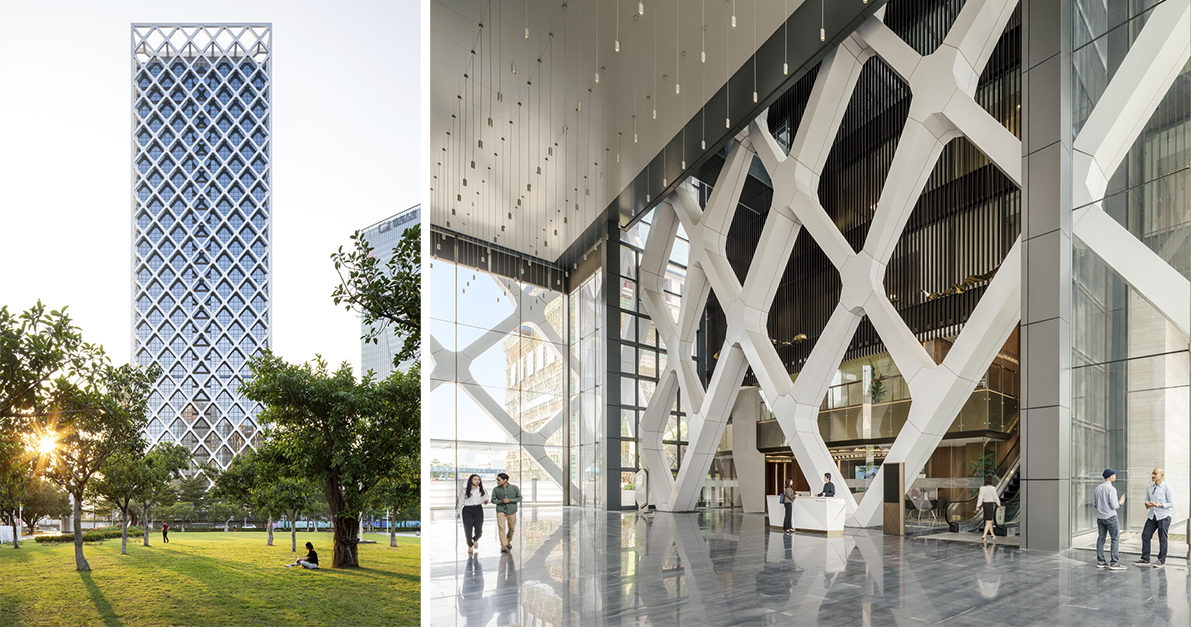
Shenzhen Rural Commercial Bank Headquarters by Skidmore Owings & Merrill (SOM) won the A+Awards Popular Choice in Architecture +Sustainability last season. The tower is certified LEED Platinum and is targeting China Green Star certification.
What are the criteria for the Sustainability Categories?
Within the context of the A+Awards, a “sustainable” building is one that incorporates Sustainable Systems, Healthy or Climate Positive Materials, and Ethical Building Practices into its design, construction and maintenance. To be eligible for these categories, you must be able to answer ‘yes’ to at least 50% (9) of the 18 questions below. Entries must also be built projects completed within the past three (3) years, with the exception of the Unbuilt Categories.
Sustainable Systems
Does your project incorporate:
- Passive heating and/or ventilation strategies?
- Renewable energy systems, such as photovoltaics?
- Pollution, waste or water reduction or reuse measures?
- Details that help improve insulation / air tightness?
- Systems for improving interior air quality?
- Construction waste reduction and/or recycling on site?
Healthy or Climate Positive Materials
Was your project was constructed with:
- Ethically sourced / locally sourced materials?
- Salvaged / recycled materials?
- Materials that can be salvaged or reused at the end of the building’s life?
- Bio-based materials / materials with organic properties?
- Materials meeting national or global testing standards for reduced toxicity?
- Materials with low embodied carbon or environmental product declarations?
Ethical Building Practices
Did your project:
- Consider environmental implications in its design, construction and operation?
- Consider equity and the quality of life of occupants in its design, construction and operation?
- Utilize local contractors and ethical labor practices in its construction?
- Adapt and/or rejuvenate existing structures and spaces for a new use?
- Include design elements that enable adaptation to a changing environment or future needs?
- Includes resilient materials whose longevity can contribute to lower life-time costs to both occupants and the environment?
Eligible projects can feature any 9 (or more) of the above 18 criteria; they do not have to be split evenly across all 3 areas. You can provide additional context and expand on the ways in which your project meets these criteria within your Sustainability Statement (max. 200 words).
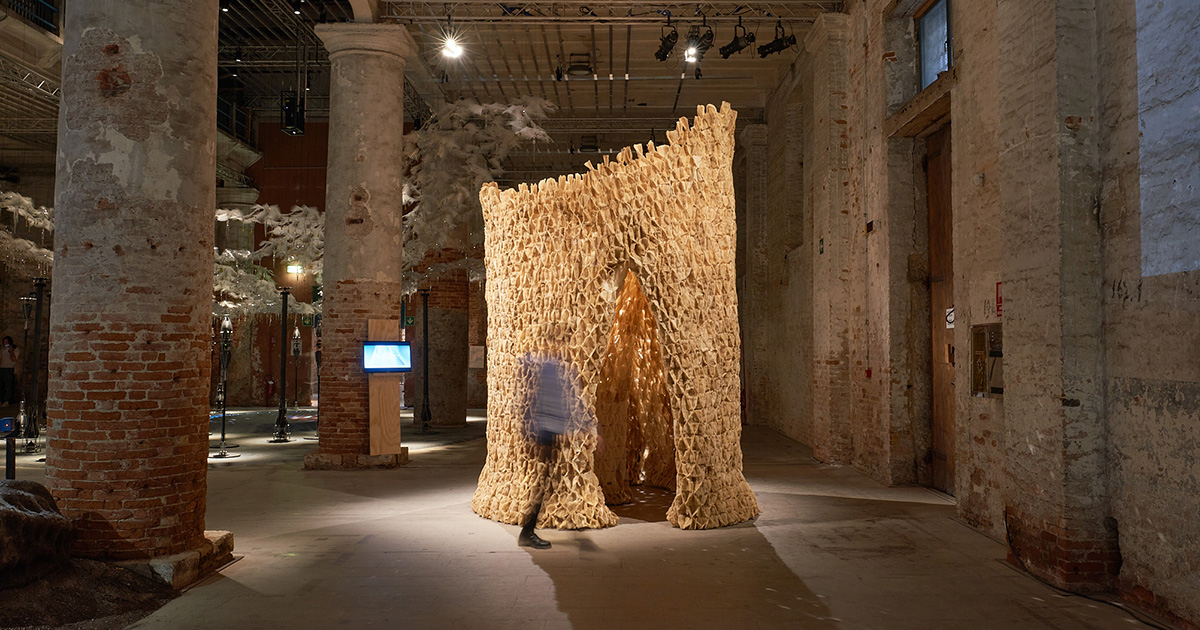
Alive: A New Spatial Contract for Multi-Species Architecture by The Living won an A+Award Finalist accolade last season in the Architecture +Experimental Design category. The pavilion is made of porous, organic material with both macro-spaces for humans and micro-spaces for microbes – and interfaces for exchanges among different species.
Who will judge the Sustainability Categories?
The A+Awards Jury is notable for the variety of expertise possessed by its members, and the diversity of fields they hail from — thought leaders from the world of architecture, interior design, planning, media, and other creative industries are included. For the A+Sustainability Awards, jurors with a special knowledge of sustainable design and construction will be selected to review entries in these categories. Esteemed jurors from recent seasons include:
- David Benjamin, Founding Principal of The Living and Associate Professor at Columbia GSAPP
- Eric Cesal, Director of Sustainable Environmental Design, UC Berkeley College of Environmental Design
- Natsai Audrey Chieza, Founder & Director at Faber Futures
- Ben Flanner, CEO and Director of Agriculture at Brooklyn Grange
- Sydney Mainster, LEED AP, Vice President of Sustainability and Design Management, The Durst Organization
- David De Rothschild (Explorer / Environmentalist)
- Monica von Schmalensee, CEO and Architect at White Arkitekter
Thought leaders like these will be joined by more influential figures in the design and construction industry to establish the Jury Winners of the Sustainability Categories, while a Popular Choice vote will be selected by the global public in an online vote.
House Zero by ICON and Lake|Flato Architects won an A+Award last season in the Architecture +Experimental Design category. The walls of the home are made with a proprietary cementitious-based material dubbed “Lavacrete,” which provides thermal mass, increased insulation, and an airtight wall to increase energy efficiency and reduce lifecycle costs.
Why do the A+Sustainability Awards matter?
It’s important to note that sustainability (and all the considerations that fall under its broad umbrella) has long been a part of the A+Awards’ judging criteria — it is included within the “Impact” section under Judging Process & Criteria. That said, we believe it is important for architects and designers to continually push the envelope when it comes to lowering carbon emissions, increasing energy efficiency, harnessing healthier materials, and advocating for ethical building practices.
The A+Sustainability Awards are designed to lead the charge in this capacity, providing an additional incentive — and additional recognition — for firms that are forging a more sustainable and resilient built environment. As A+Award-winning architect Michael Green articulated so well, “these awards are an opportunity to share meaningful, change-making innovations, so we can continue to make even better projects for our planet and our community.”
Now you have the knowledge, you’re ready to submit your projects for the Sustainability categories and more this season — click the button below to get started, and show the world what sustainable design should look like in 2024 and beyond:
